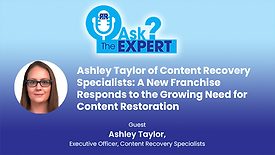Contents Restoration
A New Franchise Responds to the Growing Need for Contents Restoration
Ask the Expert
November 14, 2022
Stay ahead of the curve with our eNewsletters.
Get the latest industry updates tailored your way.
JOIN TODAY!Copyright ©2025. All Rights Reserved BNP Media.
Design, CMS, Hosting & Web Development :: ePublishing
.jpg?height=168&t=1673055764&width=275)









